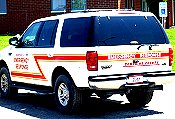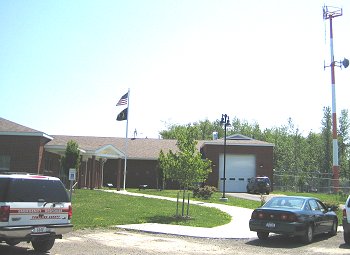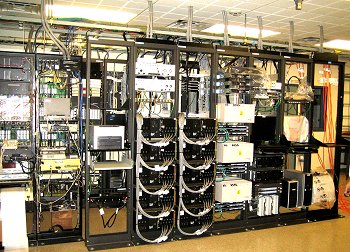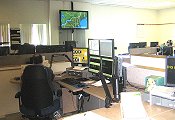- By Dan Veaner
- News
 Print
Print  You used to be able to pick up a telephone and have confidence that you would be able to make a reliable call with good sound quality that would stay connected until you hung up. In 1984 AT&T was broken into seven companies, and the result has been a wide array of choices or services, equipment, and technology that didn't exist before. But with these choices we have paid a price -- the technology isn't nearly as reliable, and the quality of a basic telephone call is generally poorer.
You used to be able to pick up a telephone and have confidence that you would be able to make a reliable call with good sound quality that would stay connected until you hung up. In 1984 AT&T was broken into seven companies, and the result has been a wide array of choices or services, equipment, and technology that didn't exist before. But with these choices we have paid a price -- the technology isn't nearly as reliable, and the quality of a basic telephone call is generally poorer.If you think a dropped cellular call is annoying, imagine the hurdles an emergency response system is facing. With aging infrastructures, outdated technology, and shrinking budgets and manpower in fire and police departments, the demands on 911 systems are growing, not shrinking. "We don't have that many more incidences today than we did ten years ago," notes Tompkins County Emergency Response Director Lee Shurtleff. "But now everybody has access to phones. If we have an accident on Route 13 it used to be that somebody would run to the nearest house and call it in. Now we'll get 15, 20, 25, 30 phone calls saying there is an accident on Route 13."

| 911...
Tompkins County's 911 center is located in the Emergency Response building near the airport. It is typically manned by three dispatchers and a supervisor, though in heavy periods a fifth station is available to help take calls. Each station has at least five computer screens for monitoring calls, locations, responders, and the status of the responses. A large screen on the wall constantly monitors weather in the county. Only a third of calls come over land lines, meaning dispatchers have to use a variety of techniques to get the location of emergencies. They use overlayed computer maps and aerial views of the county to help pinpoint callers. Overlays are so detailed that dispatchers can ask, 'Are you by a yellow barn?' Tell us what you're near and we can look at the map and fix the location.' | ||
Almost a year ago Tompkins County broke ground on a new $20 million public safety communications system that will use ten towers to connect about 20 fire and emergency medical service agencies and 10 law enforcement agencies along with a handful of county agencies. The system uses an 800 mHz simulcast digital trunking system to centralize emergency handling, allowing the agencies to communicate directly with each other.
Consolidating 911 call taking and dispatching is especially important with fewer volunteers and budget constraints, in part because departments can share the service, reducing duplication. In addition more and more departments are using the 'closest car' concept, which allows police, fire, or emergency medical agencies to respond based on how close they are rather than on their specific jurisdiction.
"Departments had the capability to respond on their own and take care of 99% of what they did," Shurtleff says. "That's not the case today. Today you have a lot of multiple agency responses, so it's even more critical that you have that ability to communicate."
Old systems were based on radio frequencies assigned to specific agencies. Often these systems were isolated, making it hard for responders to communicate between departments while cooperating on an emergency call. The new system will use ten pairs of shared frequencies. But instead of dialing a particular radio frequency, responders will dial into a 'talk group' that is dynamically assigned to whichever frequency is available.
In plain English this means that a fire fighter or police officer can simply access the other responders involved in an emergency, and they can all talk to one another. They can spend more time addressing the emergency, because it takes less time to communicate and get the crucial information they need. "It's like today's phone systems," Shurtleff explains. "You have a cable that runs between here and the switching stations. It's a trunk system and you don't really care which piece of copper it follows back to the switching station as long as it gets there."

| Future Plans Lee Shurtleff says Tompkins County is following a parallel track with the State of New York, which is developing a statewide wireless radio communications system that will be built out over the next five to ten years. "When we designed the local system we realized that whatever the State developed would not necessarily meet local needs," he says. "They would have a percentage of geography they were going to cover that wouldn't necessarily give us the full coverage that we thought was necessary in Tompkins County. "We were also not sure they would have the radio system capacity to cover all these other agencies. They're building a basic system that others can join, but it's primarily geared toward state agencies and primary response. So we designed our system in a manner that much of the same specifications could be integrated with the State, and we're expecting that when the State locates in this area we can minimize the number of towers, and be able to share our towers and buildings with them, and that they would use much of the same footprint to insure their coverage matches ours. We would have a gateway between the two systems so we could leverage both systems' resources." He also says that the system has the capability to handle additional agencies in the future. "We envision offering this so that public works and highway departments could be a part of it, possibly the airport, TCAT bus service," he says. "Anybody that is part of this response umbrella, the system would have the capacity for them to join it at some point in time, buy the radios and have some talk groups and have the interoperability." | ||
County officials specified that they wanted as close to 100% geographic coverage as we possibly could with the least number of towers. "We're probably in the range of 95%," Shurtleff says. "That's what Motorola, the project vendor, will guarantee. I'm confident that the radio coverage projections they have given us are conservative."
To encourage the local departments to sign onto the new system the County offered to purchase some of the basic new equipment needed to connect. Shurtleff says that he estimates that the County is paying for two thirds of the expense, and the rest will be picked up by the departments depending on their needs and procedures. "I think Lansing got a good shake on what we're getting," Fire Chief Scott Purcell told Lansing Fire Commissioners last month. "Lee Shurtleff gave me a worst case scenario that we could have to spend almost $135,000. What I know I need is about $37,000. There may be some things that I haven't thought of, but I would say we're not going to spend any more than $45,000 on the system."
That is a good deal, especially because Shurtleff estimates departments could spend as much as a million dollars, depending on what they want or need. For example he estimates departments will spend $300,000 to $400,000 upgrading beepers, although he notes that many have been upgrading in recent years, so will only have to change the frequencies they use when the changeover comes. The system has the ability to control things like fire horns or the Knox Boxes containing information on access to sites and equipment in fire trucks, but the departments are responsible for upgrades that will make them compatible.
But the hidden costs associated with these things are optional. "We couldn't provide for every aspect," Shurtleff says. "We just intended to get them to a basic functionality. If they have the money and can afford to do it, and are willing to do it, those are all options they can add."

Perhaps miraculously, the project is on budget and on schedule, and Shurtleff hopes to be able to switch to the new equipment on or around October 1st. That feat has required a lot of coordination and cooperation between Shurtleff's agency, Motorola, and local planning and zoning boards. "It has required a very determined effort to keep it on time and on budget," he says. "With ten locations that's ten whole sets of construction diagrams and considerations, and eight or nine different municipal entities that we had to work with cooperatively. That's ten different landowners, ten sets of attorneys, and various utilities. Zoning boards, planning boards, town boards. One thing that was required by the legislature that even though we aren't legally obligated to do so that we meet local zoning and planning requirements. It was a good faith effort to comply to the extent that was practical."
Purcell is pleased with the progress, and says the Lansing Fire Department will be ready for the switch. "Things seem to be going together pretty well," he says. "They should have all the equipment installed by August 30. They'll be doing some training and some mobile installations on the trucks in the month of September."
The new communications system is the largest capital project in Tompkins County history. Shurtleff estimates that about $16 million will be bonded, while approximately $2 million has been set aside in the County's capital project, and put aside since the late '90s. The nearly $2 million spent on equipment for the agencies comes mainly from state and federal earmarks and reimbursements.
Shurtleff is looking forward to pulling the switch in two months. He already talks about a phase two and phase three that could include the ability for people to text message emergency calls, or phone in pictures of emergencies. "It's been a real challenge," he says. "But I think all in all it's going to meet everybody's needs. The next thing is to see if we can get it to go up on time."
So far, so good!
----
v3i29




